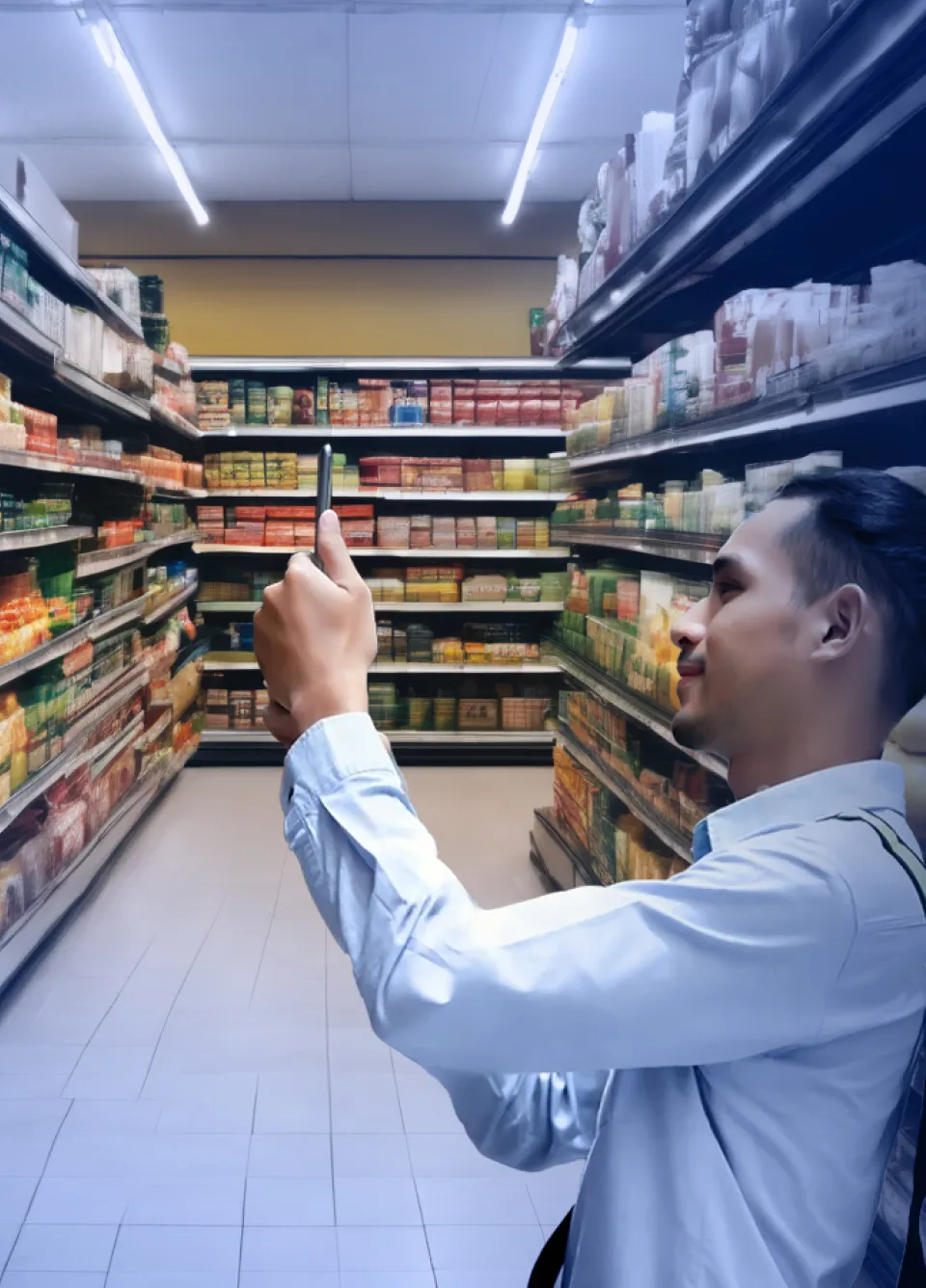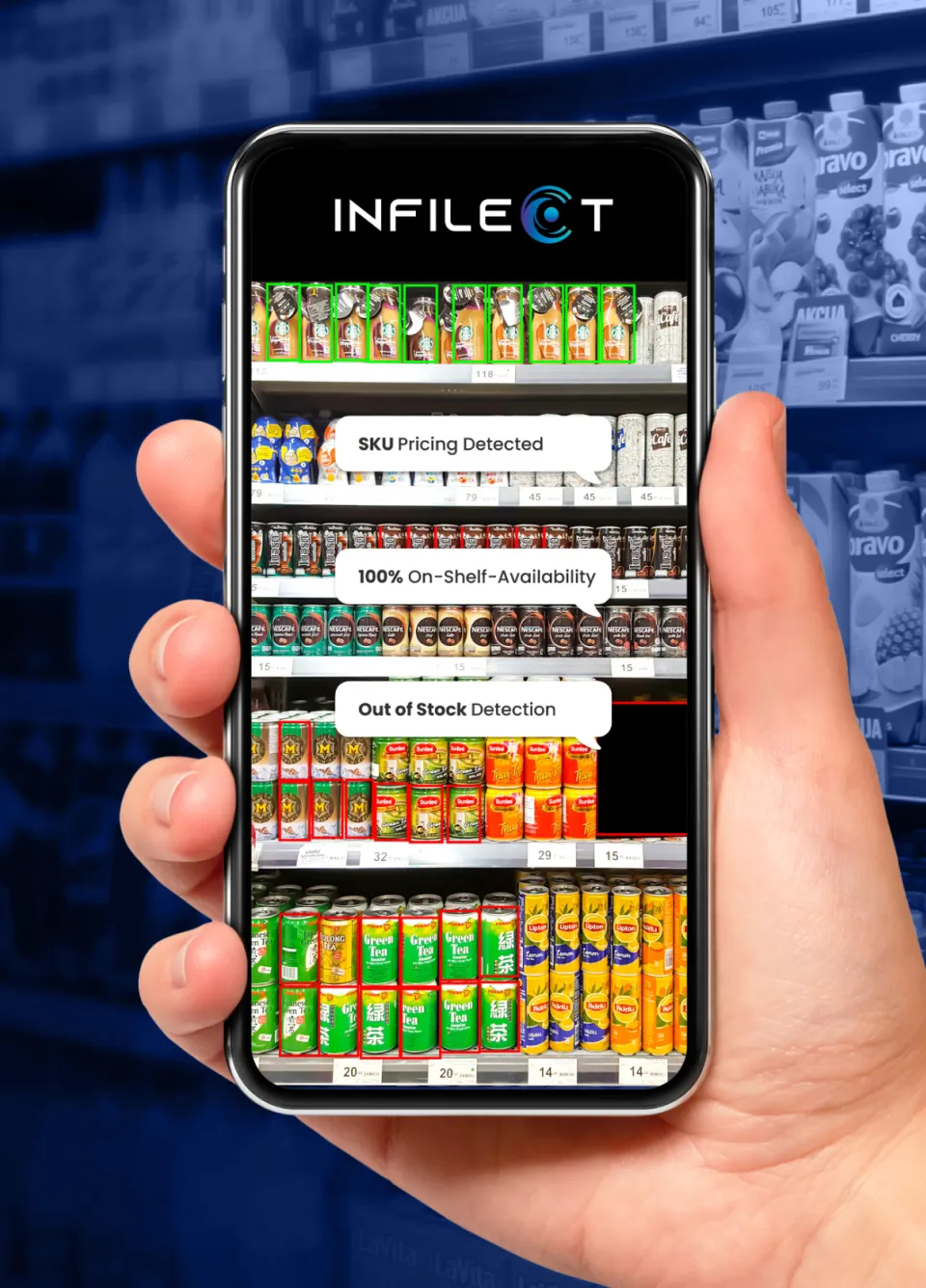

Consumer Packaged Goods is an industry that has been through constant ripples of changes be it technical, operational, or functional, and the only way out is in. Staying ahead of the curve requires more than just experience-based intuition, leveraging the capabilities of Image Recognition backed by Artificial Intelligence (IR-AI) is proving to be a game-changer for CPG manufacturers and retailers alike.





Artificial intelligence (AI) image identification can attain accuracy rates of ~95% or greater without any significant or recurring opportunity costs, whereas humans can normally accomplish a high of about 90% accuracy in their shelf checks.
Image recognition AI can accurately identify products on shelves - even in low light or cluttered environments, reducing the chances of miscounts or discrepancies in inventory levels.
Rapid image analysis allows for real-time updates on stock levels, enabling timely restocking and minimizing the risk of stockouts.
Continuous monitoring ensures that inventory data remains up-to-date, reducing the likelihood of errors due to outdated information.
Image recognition enables precise monitoring of shelf layouts and product placements, ensuring compliance with planograms.
A low turnaround time facilitates quick adjustments to shelf configurations, allowing for agile responses to market demands and promotional changes.
Regular scans ensure that shelf layouts align with current marketing strategies and consumer preferences.
AI can accurately identify empty spaces on shelves, distinguishing between false positives & true negatives, and ensuring that stockouts are promptly addressed.
Real-time monitoring allows for immediate action, reducing the duration of stockouts and potential revenue loss.
Continuous monitoring ensures that out-of-stock situations are detected and addressed as soon as they occur.
Image recognition ensures accurate tracking of promotional displays and compliance with marketing strategies.
A rapid analysis allows for quick identification of any deviations from planned promotions, enabling timely corrective measures.
While regular scans ensure ongoing compliance with promotional initiatives, reducing the risk of missed opportunities.
Image recognition can be applied in supply chain monitoring, ensuring accurate tracking of products from manufacturing to delivery.
Rapid analysis facilitates quick responses to supply chain disruptions, minimizing delays and potential losses.
Continuous monitoring enhances overall supply chain visibility, reducing the risk of disruptions.
In our e-book, Shelfonomics - A Product Performance Guide For CPG Decision Makers, we discussed how data repository and data accuracy share a directly proportional relationship, i.e, as the data repository expands in size and diversity, the accuracy of insights derived from it also increases by a corresponding percentage. In simpler terms, as your data gets richer, the quality of insights improves in step with it.
The speed at which IR-AI processes visual data is unparalleled. Real-time analytics empower decision-makers with up-to-the-minute insights, enabling them to respond swiftly.

Leveraging historical data, both in-store & catalog sourced and machine learning algorithms, IR-AI goes beyond descriptive analytics. It predicts future trends, allowing CPG players to proactively adjust strategies and capitalize on emerging opportunities.

Understanding consumer behavior at the point of purchase is crucial. IR-AI enables retailers to personalize marketing efforts based on real-time insights, enhancing customer engagement and loyalty.

The power of AI in CPG retail decision-making is not a luxury; it's a necessity for those who aim not only to survive but to thrive in the ever-changing landscape of Consumer Packaged Goods.